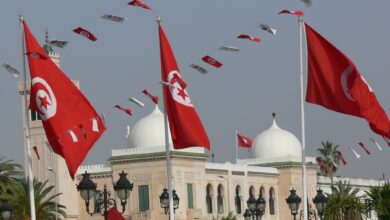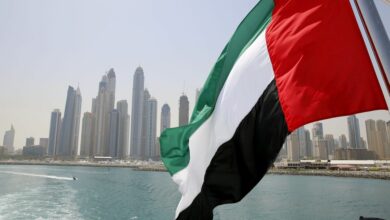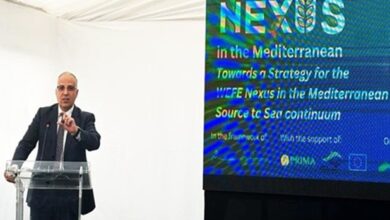Tunisian geographer Habib Ayeb grew up in the time of Gamal Abdel Nasser’s Arab nationalism and socialist rhetoric. Born in 1954 in the Tunisian south, Ayeb’s mountainous village was often threatened by drought and water scarcity. Against such a backdrop, Ayeb and his generation rallied around Nasser’s High Dam project that laid the ideological ground for the Arab Left. In 1981, Ayeb, like many Tunisian leftists, was harassed by Habib Bourguiba’s dictatorship that barred political activism. He left for France, where he began his doctoral studies on Egypt’s High Dam project and the politics of water in the Nile Basin. Since then, Ayeb has been living between Egypt and France, the former consuming his scholarship.
Since January 2011, Ayeb has been a close observer of, and participant in, both Tunisia’s and Egypt’s revolutions. On his most recent visit to Cairo last month, he explained to Egypt Independent why Egyptians should not be fooled into thinking that the Tunisian revolution, unlike the Egyptian, is realizing its goals.
Egypt Independent: Talk is common about how Tunisia’s transition is heading in the right direction while Egypt’s revolution is doomed. Do you see commonalities at this point at all?
Habib Ayeb: I see similar trajectories and different rhythms. The scene in Egypt now presents two alternatives, the ancient regime, which has its associations with two critical classes, the military class and the urban business bourgeoisie. The second alternative is that of the Islamists, who are no less economically liberal than the former alternative. In Tunisia, we’re getting closer to a similar configuration. Perhaps we have differences on the surface, but beneath is the same. The Islamist Ennahda is one alternative we have and the second surrounds Beji Caid Essebsi, the former prime minister who has just announced the formation of a secularist party that includes the center left as well as figures of Zine al-Abidine Ben Ali’s disbanded Constitutional Democratic Rally (RCD). Egypt may have gone down this road quickly, but we’re heading in the same direction. Social and economic demands are forgotten and so are the people who started the revolution.
EI: Does this mean that the revolutions were merely motivated by socioeconomic grievances?
Ayeb: Let us first set the record straight. The revolutions, whether in Egypt or Tunisia, did not erupt out of nowhere last year. There were revolutionary precursors in Egypt — and Tunisia to a lesser extent — manifested in pockets of workers’ protests and strikes that made last year’s outbursts possible.
EI: Then why were the commentators on Arab affairs surprised by what was dubbed “the Arab Spring”?
Ayeb: There is a structural problem in how intellectuals and scholars of the Arab world study this region. We, as native scholars, tend to read our own societies through the paradigms produced by Western scholarship. Let me explain; certain interests or problems direct Western scholarship on the region. There is a fixation, for example, on issues related to political Islam that is driven by the problem of Arab migration that the West is grappling with. A related fixation is on the threat of terrorism; therefore, you find that issues of migration, gender and political Islam preoccupy most scholars. Even when the question of development is addressed, it is usually addressed on the macroeconomic level and framed through the colonial legacy that made the third world (ex-colonies) dependent on the core (the colonial centers). Therefore, there was rarely any attempt to localize the scholars’ gazes at the micro-level problems of Arab societies. Processes of impoverishment, marginalization, and rural issues in general are not on the top of the foreign funders’ agenda. Therefore, there is a lack of knowledge of socioeconomic problems and processes on the local level.
EI: How then did this influence studies on Arab revolutions?
Ayeb: In the case of Tunisia, for example, scholars did not even know where Sidi Bouzid (the site of the first clashes of the Tunisian revolution) is located on the map. Some were quick to call the Tunisian uprising, “The Jasmine Revolution,” not realizing that residents of Sidi Bouzid have probably never seen any jasmine in their lives. They were assuming that all of Tunisia is as charming as the tourist city of Sidi Bou Said — hence the reference to jasmine. What I am trying to say, really, is that the serious absence of research agendas that are derived from local issues and problems left scholars largely unequipped to provide sound analysis of the revolutions. It therefore took time for good studies on the revolution to come to life.
EI: Now that enough time has elapsed since the revolutions erupted, how can we compare what happened in Tunisia on 17 December 2010 (when Mohamed Bouazizi set himself on fire) with what happened in Egypt on 25 January 2011?
Ayeb: I think the most interesting angle of comparison is to understand what both revolutions tell us about the issue of cross class alliances. In Tunisia, this cross class alliance was most striking in the period of 17 December to 14 January (when Ben Ali fled the country). After the street vendor, Bouazizi, tragically died through self-immolation, fierce clashes erupted between Bouzid’s residents and Ben Ali’s police force. Images of the police’s brutal crackdown went viral on social media, thus mobilizing the Tunisian public (across the various classes) against the regime. This cross-class alliance, which eventually led to the ouster of Ben Ali, was temporary.
EI: And how did this temporality influence the revolutionary path in Tunisia?
Ayeb: After Ben Ali fled, the upper and middle classes began acting to safeguard their interests (in the garb of safeguarding the countries’ investment and tourism industry) and thus forgoing the plight of the very poor, such as Bouazizi. This is evident in the wide support for Mohamed Ghannouchi, Ben Ali’s prime minister, in January 2011, and the consequent call for banning all kinds of protests and strikes — which is very similar to what happened in Egypt in fact. The middle classes rallied for the above demands through staging demonstrations on the famous Bourguiba Avenue. In response, Tunisia’s marginalized groups (small farmers, seasonal workers and the unemployed) occupied the Kasbah, camping outside the cabinet’s headquarters on 22 January 2011. The Kasbah protestors scribbled their anxieties on the walls: “I will not go back to sitting at the café;” “We have had enough.” The demands of the Kasbah protestors revolved around critical socioeconomic issues of housing rights, employment and social welfare. At this same moment, the Tunisian middle class was developing a parallel rhetoric, one not as “radical” as the Kasbah demands, but rather fixated on slow reform, asking for the protests to calm down to prevent the economy from “collapsing.” The middle class feared that the prolongation of the revolution in the fashion of the Kasbah sit-in would threaten their class interests. The events of the Kasbah thus signified the dismantling of the cross-class alliance we addressed above.
EI: What course did this cross-class alliance take in Egypt?
Ayeb: In Egypt, this cross-class alliance is still ongoing to a certain degree, thanks to the Supreme Council of Armed Forces’ mismanagement of Egypt’s transitional period, which to a great extent continues to mobilize people across the various classes to call for the downfall of military rule. In other words, SCAF did not successfully bandwagon with the middle class to end this cross-class alliance. In Tunisia, after the elections of the constituent assembly, led by Ennahda, the middle class were given guarantees that their personal freedoms and political rights (such as freedom of expression, freedom of belief, women’s rights etc.) will not be tampered with. In return, the ruling coalition asked for a six-month societal “truce” or suspension of protests, deferring the fulfillment of parochial demands or socioeconomic grievances of the marginalized until the country “stabilizes.” My real fear is that the Tunisian revolution ends here.
EI: And what do you hope will happen in Tunisia?
Ayeb: The hope really lies in the steadfastness of the lower classes in reclaiming their revolution through the continual utilization of newfound political rights, such as mobilizing through syndicates and other venues of political participation. If we were to be optimistic, this might eventually lead to a new social welfare agreement that imposes regulations on capital accumulation, in order to improve the livelihood of the poor.
EI: What about Egypt?
Ayeb: The challenge in Egypt, like Tunisia, lies in whether the left-leaning groups and organizations will be able to connect with the marginalized. The real challenge that will be facing Egypt’s rulers very soon is not how to deal with the military establishment or the middle class’ demands for political rights. The real challenge is how the decision makers will deal with the poor. Those ruling Egypt will soon realize the necessity of finding ways to provide safety nets to alleviate poverty — indeed a daunting task. Eighty percent of Tunisian and Egyptian farmers are poor. How can the state deal with this problem, given that free market policies and fostering investment will not alleviate poverty? Poverty alleviation has to be the priority of the Egyptian and Tunisian decision makers and activists, if the revolutions are to really succeed. Until then, we cannot really say that Tunisia succeeded, while Egypt failed.




